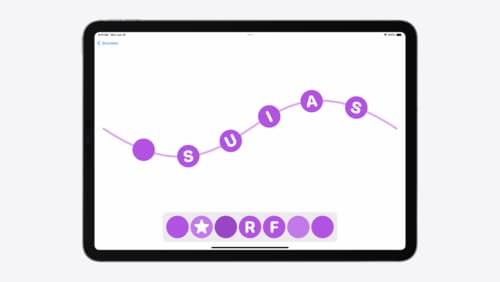How is the SwiftUI State management?
Asked on 2024-09-03
2 searches
SwiftUI state management is designed to be intuitive and efficient, allowing developers to create dynamic and responsive user interfaces with minimal boilerplate code. Here are some key aspects of SwiftUI state management as discussed in the "SwiftUI essentials" session at WWDC 2024:
-
State-Driven Views: SwiftUI views are state-driven, meaning that when the state of a view changes, SwiftUI automatically updates the UI to reflect those changes. This eliminates the need for manual UI updates and reduces the likelihood of update bugs. SwiftUI maintains a representation of the user interface behind the scenes and updates it as data changes.
-
State and Binding: SwiftUI provides several tools for managing state, including
@Stateand@Binding.@Stateis used to create a new internal source of data for a view. SwiftUI manages the storage of this state and provides it back for the view to read and write.@Bindingcreates a two-way reference to the state of another view, allowing for synchronized updates between views.
-
Dependency Tracking: SwiftUI keeps track of dependencies between views and the data they use. When a piece of data changes, SwiftUI automatically re-evaluates the views that depend on that data, ensuring that the UI is always up-to-date.
-
Composition and Performance: SwiftUI views are value types defined using structs, which are declarative descriptions of the UI. This allows for efficient data structures and performance optimizations. Breaking up a view into multiple components does not negatively impact performance, allowing developers to organize code in a way that makes sense for their app.
-
Animations: State changes in SwiftUI can be animated to provide a smooth user experience. By wrapping state changes with animations, developers can apply default or custom transitions to view updates.
For more detailed information, you can refer to the SwiftUI essentials session.

SwiftUI essentials
Join us on a tour of SwiftUI, Apple’s declarative user interface framework. Learn essential concepts for building apps in SwiftUI, like views, state variables, and layout. Discover the breadth of APIs for building fully featured experiences and crafting unique custom components. Whether you’re brand new to SwiftUI or an experienced developer, you’ll learn how to take advantage of what SwiftUI has to offer when building great apps.

Enhance your UI animations and transitions
Explore how to adopt the zoom transition in navigation and presentations to increase the sense of continuity in your app, and learn how to animate UIKit views with SwiftUI animations to make it easier to build animations that feel continuous.

What’s new in SwiftUI
Learn how you can use SwiftUI to build great apps for any Apple platform. Explore a fresh new look and feel for tabs and documents on iPadOS. Improve your window management with new windowing APIs, and gain more control over immersive spaces and volumes in your visionOS apps. We’ll also take you through other exciting refinements that help you make expressive charts, customize and layout text, and so much more.
